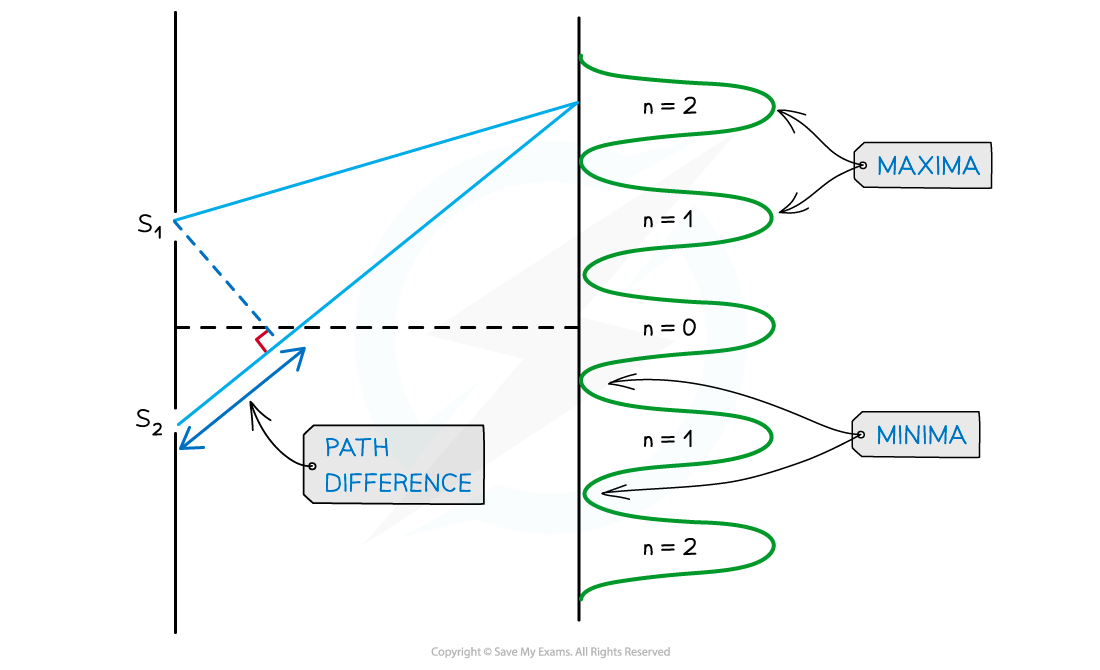Demonstrating Two Source Interference
- Interference of sound, light and microwaves can be demonstrated with slits or diffraction gratings
Using Water Waves
- Two-source interference in can be demonstrated in water using ripple tanks
- The diagram below shows diffracted circle shaped water waves from two point sources eg. dropping two pebbles near to each other in a pond

Water waves interference pattern from a ripple tank
- The two waves interfere causing areas of constructive and destructive interference
- The lines of maximum displacement occur when all the peaks and troughs line up with those on another wave
Using Sound Waves
- Two source interference for sound waves looks very similar to water waves

Sound wave interference from two speakers
- Sound waves are longitudinal waves so are made up of compressions and rarefactions
- Constructive interference occurs when two compressions or two rarefactions line up and the sound appears louder
- Destructive interference occurs when a compression lines up with a rarefaction and vice versa. The sound is quieter
- This is the technology used in noise-cancelling headphones
Using Microwaves
- Two source interference for microwaves can be detected with a moveable microwave detector

Microwave interference experiment
- Constructive interference: regions where the detector picks up a maximum amplitude
- Destructive interference: regions where the detector picks up no signal
Using Light Waves
- For light rays, such as a laser light through two slits, an interference pattern forms on the screen

Laser light interference experiment
- Constructive interference is shown as bright fringes on the screen
- The highest intensity is in the middle
- Destructive interference is shown as the dark fringes on the screen
- These have zero intensity


 The two sources vibrate in phase but have different amplitudes of vibration. A microphone M is situated 150 cm from S1 along the line normal to S1 and S2. The microphone detects maxima and minima of the intensity of the sound. The wavelength of the sound from S1 to S2 is decreased by increasing the frequency.Determine which orders of maxima are detected at M as the wavelength is increased from 3.5 cm to 12.5 cm.
The two sources vibrate in phase but have different amplitudes of vibration. A microphone M is situated 150 cm from S1 along the line normal to S1 and S2. The microphone detects maxima and minima of the intensity of the sound. The wavelength of the sound from S1 to S2 is decreased by increasing the frequency.Determine which orders of maxima are detected at M as the wavelength is increased from 3.5 cm to 12.5 cm.

